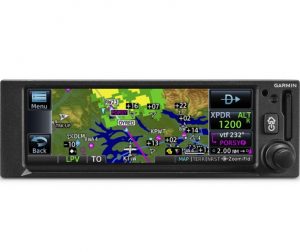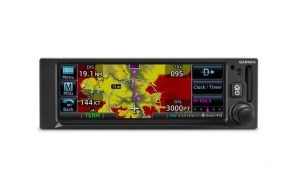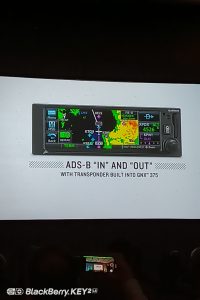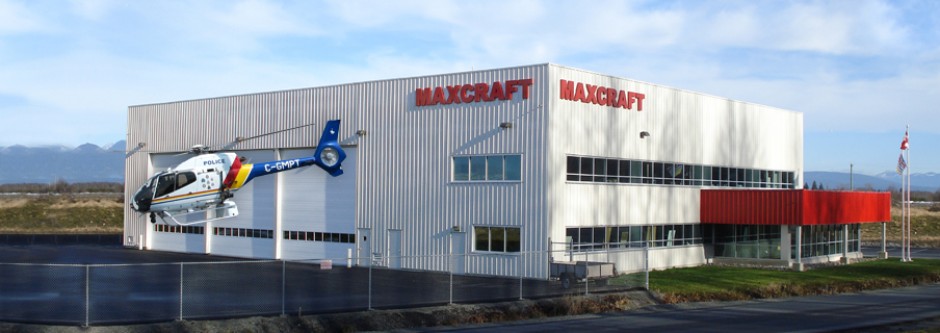Maxcraft is excited to learn that Garmin announced the new GPS 175 and GNX 375 navigators with LPV (localizer performance with vertical guidance approach capability).
From Garmin:
Pilots receive the benefits of high-integrity WAAS/SBAS GPS guidance in a compact, (6.25-inches wide by 2-inches tall) design that is both cost-effective and easy to incorporate into an existing avionics stack. The GPS 175 is a standalone certified IFR navigator with a vibrant, color touchscreen display packed with advanced features and capabilities including WAAS/LPV approaches. The GNX 375 has all of the capability of the GPS 175 and adds Automatic Dependent Surveillance-Broadcast (ADS-B) Out, as well as dual-link ADS-B In via a built-in transponder. Intended for Class I/II aircraft that weigh 6,000 lbs./2,721 kg. or less, as well as experimental/amateur-built (EAB) aircraft, the GPS 175/GNX 375 have received Supplemental Type Certification (STC) and are available immediately from your nearest Dealer.
Slim and unobtrusive, the GPS 175/GNX 375 include a WAAS/SBAS GPS that is IFR approach-capable. A vibrant, colorful touchscreen display boasts a familiar Garmin user experience that enables quick and intuitive entry of flight plan information, while a dual concentric knob and dedicated home button offer added versatility when interfacing with the touchscreen. Dedicated pages within the GPS 175 include a moving map, flight plan, nearest, procedures, waypoint information and terrain pages, and the GNX 375 adds traffic and weather pages. The addition of a dedicated direct-to button on the touchscreen offers quick access to direct airport or waypoint navigation. Customizable data fields and short cuts on the moving map to pilot-selectable pages such as the nearest airport allow for quick, one-touch access to important information in-flight.

Fully WAAS IFR-approach-capable, the GPS 175/GNX 375 give pilots the benefit of flying LPV, Lateral Performance (LP), as well as all Area Navigation (RNAV) approaches. Many approaches offer vertical approach guidance as low as 200-feet above ground level (AGL). Pilots can also leverage the touchscreen and moving map to easily generate customized holding patterns over an existing fix in the navigation database or a user-defined waypoint and easily insert it into a flight plan. Visual approaches are also available within the GPS 175/GNX 375 and provide lateral and vertical approach guidance in visual flight conditions. Visual approaches offer added assurance at unfamiliar airports or in challenging environments to ensure the aircraft is aligned properly with the correct runway, while also taking into consideration terrain and obstacle avoidance.
Designed to replace earlier-generation products such as the iconic GPS 150/155 series, the GX 50/55, as well as the KLN 89/90/94 series, aircraft owners won’t have to make significant panel modifications to accommodate the GPS 175/GNX 375. Aircraft owners can also retain many of their existing flight instruments, audio panels and many legacy CDI/EHSI indicators such as the KI 209, or easily pair it with a new or existing flight display like the G5 electronic flight instrument. Additional interface options include the G3X Touch flight display for experimental and certificated aircraft, the GFC 500 and GFC 600 autopilots, as well as select third-party autopilots. Additionally, precise course deviation and roll steering outputs can be coupled to the GFC 500/GFC 600 autopilots and select third-party autopilots so procedures such as holds, radius-to-fix (RF) legs and missed approaches may be flown automatically.
Built-in Connext® cockpit connectivity gives pilots the benefits and efficiencies of a wireless cockpit, enabling wireless flight plan transfer via Bluetooth to and from compatible portables and mobile devices running the Garmin Pilot and FltPlan Go applications. GPS position information and back-up attitude can also be used by compatible products. Because the GNX 375 has an integrated ADS-B transponder and dual link ADS-B In, pilots can also view ADS-B traffic and weather on compatible mobile devices and portables. Offering a faster, more intuitive method of judging target trajectories and closure rates, ADS‑B enabled TargetTrend aids in the identification of real traffic threats, while TerminalTraffic displays a comprehensive picture of ADS-B-equipped aircraft and ground vehicles. Patented TargetTrend and TerminalTraffic are exclusively available within Garmin products, including the Garmin Pilot app. For customers that already equipped for ADS-B, the GTX 345 or GDL 88 can interface to the GPS 175 to display ADS-B In. Additional wireless benefits include Database Concierge, which is available as an option by pairing the Flight Stream 510 with these navigators.
The GPS 175/GNX 375 offer unique benefits that only a touchscreen can provide, such as graphical flight plan editing, allowing pilots to more easily edit their flight plan based on an ATC amendment or weather. Features such as FastFind simplifies flight plan entry by applying predictive logic to suggest airports and waypoints using current GPS location, while Smart Airspace makes it easier to identify pertinent airspace on the moving map. The addition of SafeTaxi® airport diagrams display runways, taxiways, Fixed Based Operators (FBO’s), hangars and more relative to the aircraft’s location on the airport surface.
Call or come visit our team at Maxcraft Avionics for more information!

Maxcraft Avionics is a leader in airplane and helicopter avionic system upgrades, including installation of everything from basic VHF Radios and flight instruments, all the way to sophisticated GPS, TCAS, EFIS, and glass cockpit systems. We have the largest avionics facility in Canada and over 20,000 unique part numbers in our inventory to repair your aircraft or upgrade your cockpit.



